The laws of physics state that a gunfight occurs in a varied amount of time. It starts at point A and moves through the steps to point Z. The one variable in this equation however is time. This is true at every step of the process. For example, drawing your handgun could be considered moving from point A to B. You are completely capable of defining how long that process takes.
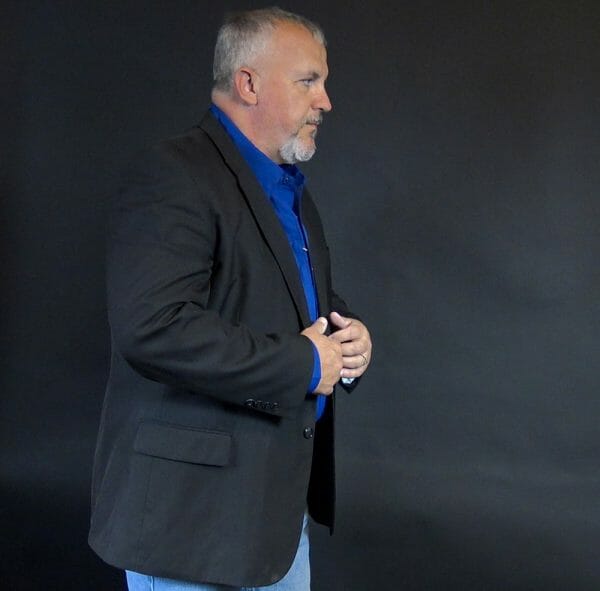
U.S.A. –-(Ammoland.com)- In more common terms, you have to get your gun into the fight quickly and accurately. A slow or sloppy presentation is akin to leisurely leaving the starting blocks when the starter’s gun goes off for a race. If you can move from A to B quickly, then you are ahead of the curve and allow yourself sufficient time to manage the remaining components of defending your life. With that in mind, let’s break down the draw.
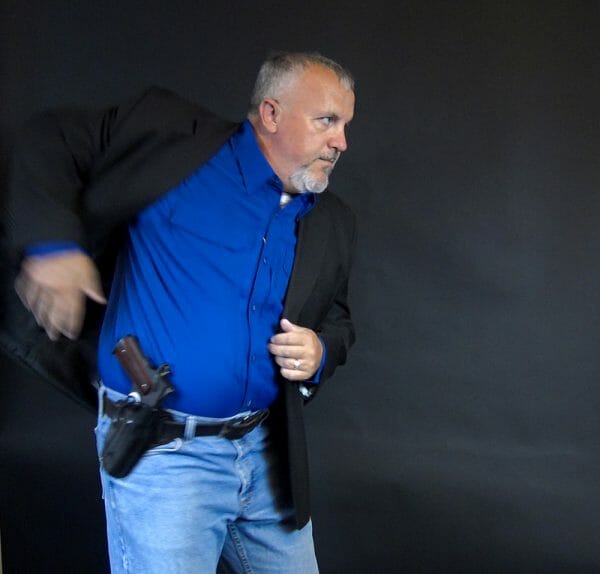
Hands On
The first step in this process is getting your grip on the gun. We will focus on economy of motion at every step of this process. When the stuff hits the fan, a smooth draw stroke will win the day.
One important thing to remember is that the grip you initially get on the gun should be the same grip you are shooting with.
Readjusting the gun after it leaves the holster is time-consuming and detrimental to accuracy. To get the best grip, come down onto the grip from an 11 o’clock angle. This puts your hand in line with the back strap of the gun and allows a straight path to the gun. The thumb of the hand should drive down the side of the gun as the hand moves into contact with the back strap. At this point your hand should be high on the back strap and firmly in contact with the gun. Proper position high on the back strap is critical for a fighting grip.
Unnecessary body motion should be avoided. Many people instinctively begin to do a half squat or twist their bodies during the initial index. This is wasted motion and can interfere with a clean index. We are going to multi-task at this point and put our support hand flat on our abdomen just below the sternum. This is a preparation move for the moment we move both hands to the gun.
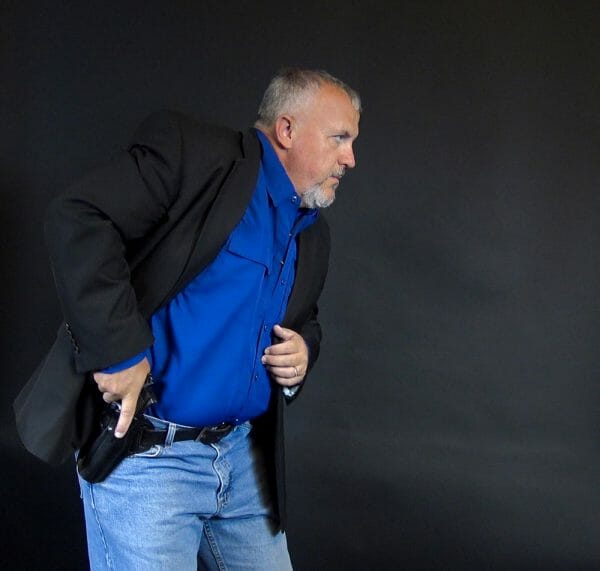
Up and Out
With a solid grip we now draw the pistol straight out of the holster. Canting and or twisting the gun will only slow us down. Draw up high towards your armpit and then simply lower your elbow which brings the muzzle into the target.
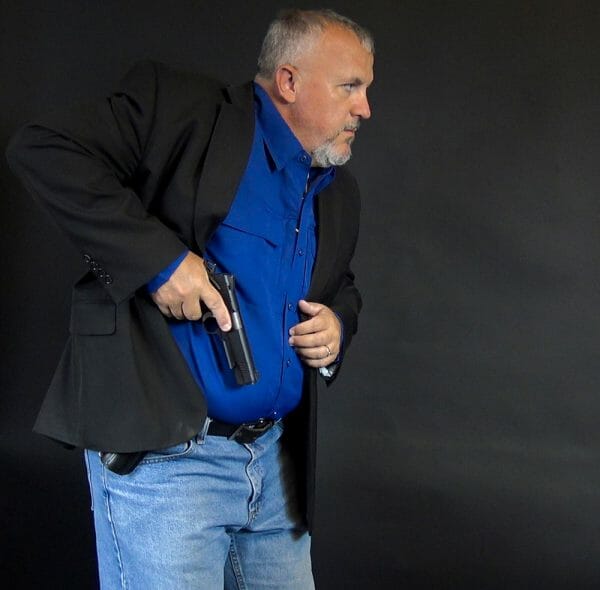
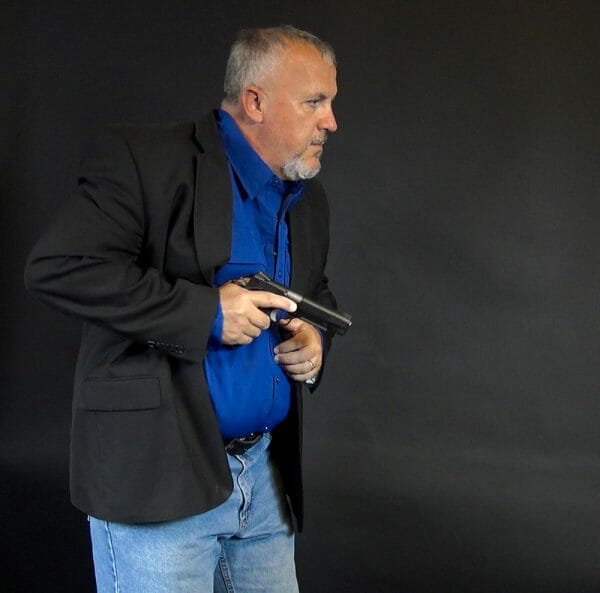
You are now in close quarters fighting position should you need to engage one-handed. The support side hand now begins to move across the body towards the gun so we can build our two hand grip.
Point in
It is time to start driving the gun towards the target and building our grip. In a smooth motion start pushing the gun forward towards the target while simultaneously adding the second hand to the grip. It is important that the support side hand get onto the gun quickly as it adds both stability and aids in us raising the sights into the target. The two should almost melt together and create a solid shooting grip. With the already established grip of the shooting hand, the support side hand should wrap around the shooting hand with the thumb down and towards the target. The shooting side thumb will rest on the meat of the support side thumb. With both hands on the gun we develop a 50/50 grip on the gun. Each hand applies equal pressure on the weapon. While you do not want to crush it, a firm grip on your pistol will improve accuracy and overall shooting. We will also have equal pressure side to side on our gun. This helps us move smoothly from target to target.
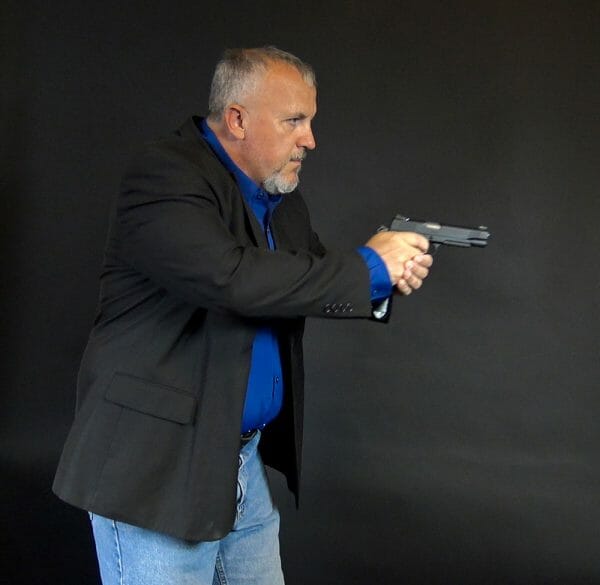
Target Acquired
The last part of this dynamic event is acquiring our sights and running the trigger. Practice good sight alignment and sight picture as you now begin to run the trigger. With one fluid smooth motion, press the trigger to the rear until the gun fires. Let the trigger rest and repeat as necessary.
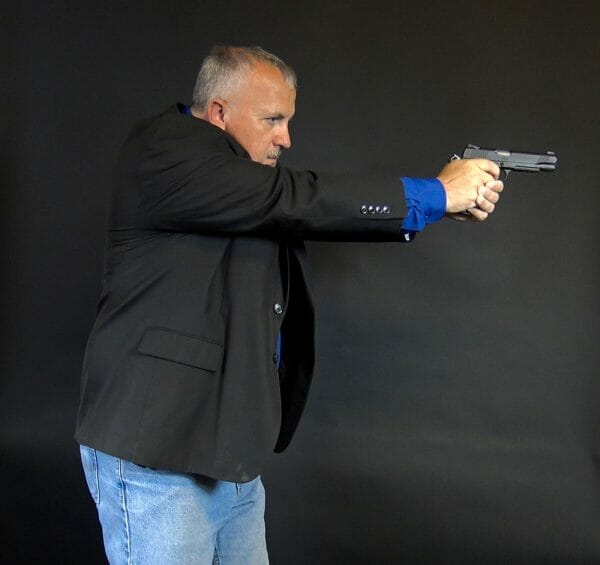
While this is presented in a step by step format, your draw stroke should be one fluid motion. This is accomplished through practice followed by more practice. While we can’t control what an assailant initially does, we can control how fast we can get our gun into the fight. You should be fast, decisive and accurate. With clean repetitions you can absolutely become a quick draw!
About Fred Mastison
Mr. Mastison is a professional instructor in the fields of defensive tactics, firearms, and executive protection. He is a reserve police officer and has been training in close quarter combatives for over three decades. He is recognized internationally as one of the top combatives and firearms instructors in the world. He also operates an executive protection division and provides services around the world.
Mr. Mastison is a published author on the subject of Defensive Tactics training and firearms. As a freelance writer and has written over 300 articles for national magazines.
His courses are recognized and certified by several state law enforcement POST agencies and officers receive professional credit for attendance. He currently holds 16 separate POST course certifications around the U.S.
Mr. Mastison is a certifying instructor for law enforcement firearms instructors in handgun, patrol rifle, shotgun and sub machine gun. He is nationally NRA certified instructor in multiple disciplines. He provides training ranging from basic introduction to advanced SWAT courses.
With almost 30 years in the martial arts, Mr. Mastison has trained thousands of students over the years.
